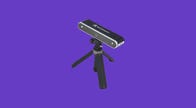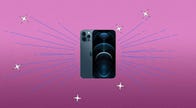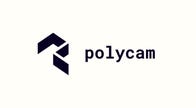Technologies
Is Your iPhone Good Enough to Be a 3D Scanner?
For creating 3D printer files, your options include smartphone apps or expensive standalone scanners.

Most 3D scanners are handheld devices that scan small to medium-sized objects with a high degree of accuracy. The resulting files are used for 3D modeling or 3D printing and they can produce fantastic results — if you’re patient and willing to learn how to use them.
These scanners, like the popular Revopoint Pop 2, can cost $700 and have a steep learning curve. Alternatively, if you own an iPhone 12 Pro or higher you can almost recreate what a fancy 3D scanner does. It isn’t quite as accurate, especially for 3D printing, but if you spend some time tweaking, the output can be just about as good.
Read more: Best 3D Printer
Creating 3D prints from files uploaded to communities like Thingiverse or Printables is fine, but once you can scan and recreate real-world objects, there’s no limit to what you can create. For example, you could replicate a collectible figure or scan a broken mechanical part to recreate it.
Using a 3D scanner
Pros:
- Can capture detail down to 0.1mm
- Dimensional accuracy is excellent
- Very little clean-up when you succeed
Cons:
- Often costs more than a 3D printer
- Software is often very hard to use
- Creating a usable model is painfully difficult
3D scanners use reflected light — sometimes in the form of lasers — to map the surface of an object. The scanner uses two cameras to judge depth and create a «point cloud» that can be fused together to make a solid object. That solid model is often incredibly accurate down to the smallest crack or imperfection.
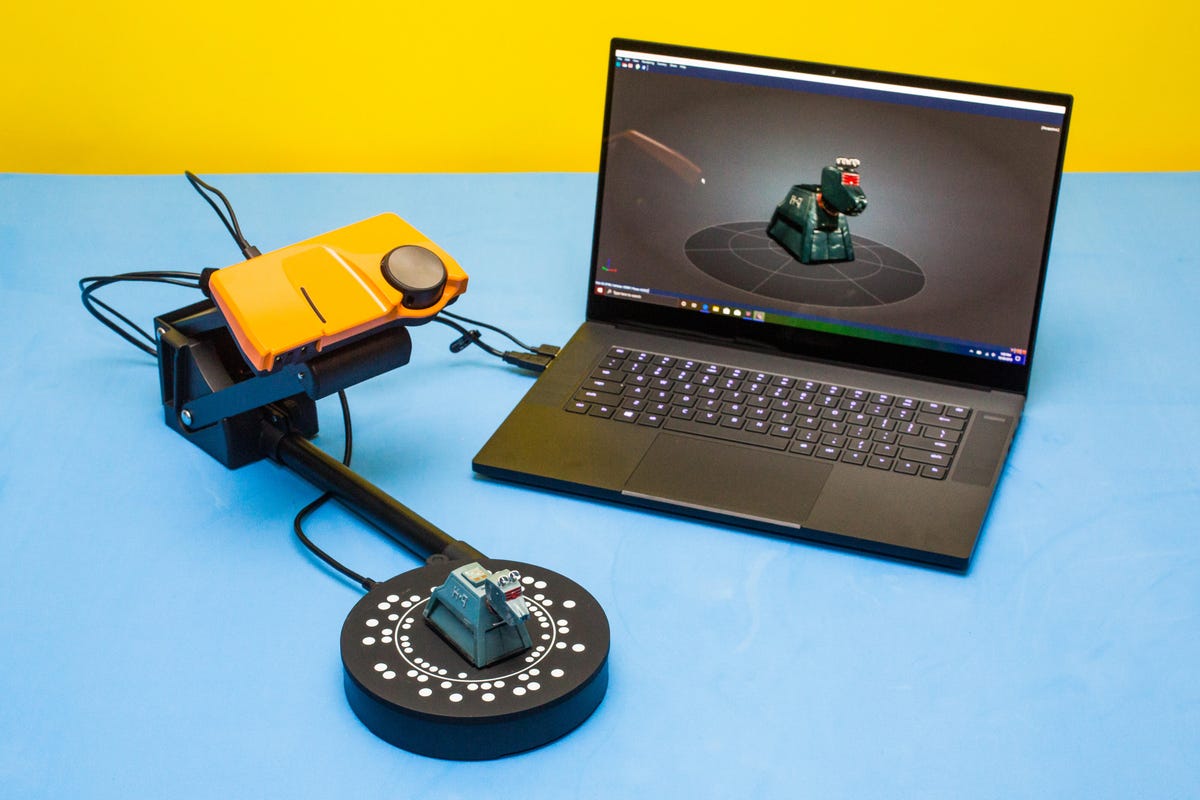
But scanning an object can be difficult. The scanner needs to be the right distance from the object you’re scanning at all times, and the object has to be the right color and reflectivity as well. Often, you will need a 3D scanning spray to coat your model in a white, evaporative coating to make scanning easier. This is not possible with human subjects, but does help with inanimate ones. Or at least it should.
I’ve spent hours using 3D scanners and struggle every time to produce a model that could be 3D printed. Often a scan will lose connection, then restart in the wrong place, causing severe disruption. After a lot of trial and error, I’ve managed to get several usable models, but the amount of work it took just didn’t seem cost-effective.
Using your iPhone
Pros:
- Incredibly fast scanning
- Models are instantly usable as online resources
- You likely already own one
Cons:
- Lower detail and quality
- Can need a lot of clean-up to make it 3D print-ready
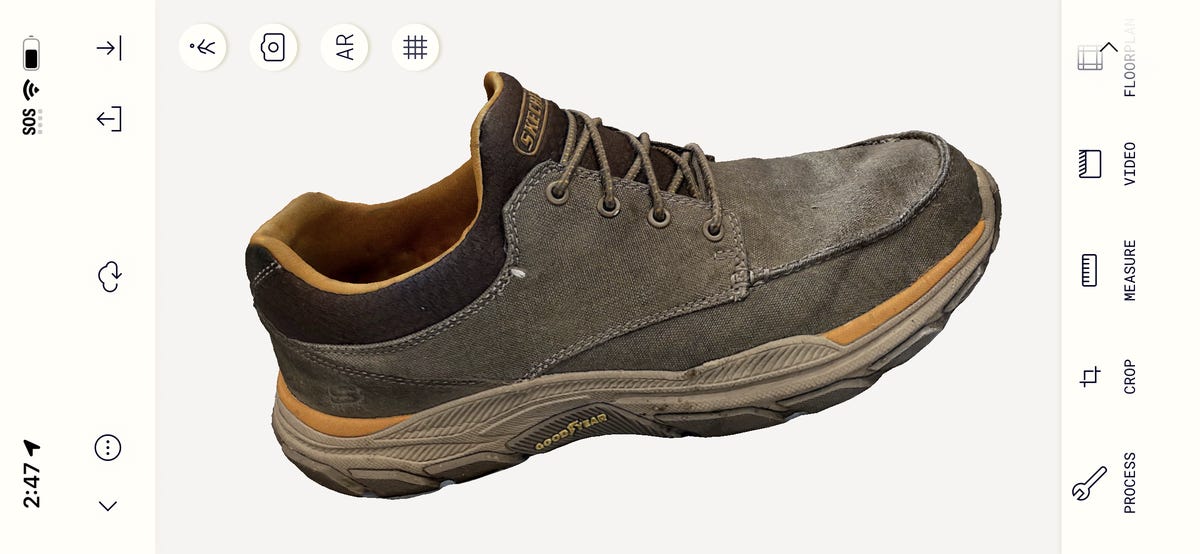
iPhones have a lot of cool technology that makes them excellent 3D scanners, including good cameras for photogrammetry and lidar technology for larger objects like cars or the inside of your home.
Photogrammetry is the best way to create a fully realized 3D model if you want that model to only exist digitally. It uses multiple pictures — the more pictures the better — to create a realistic facsimile of an object. The depth mapping is far rougher than a 3D scanner, but the textures and photo imagery make the model look extremely detailed. As you can see, the shoe in the image above looks identical to the real thing when the textures are shown, but the model I 3D-printed from it has lost a lot of its details.
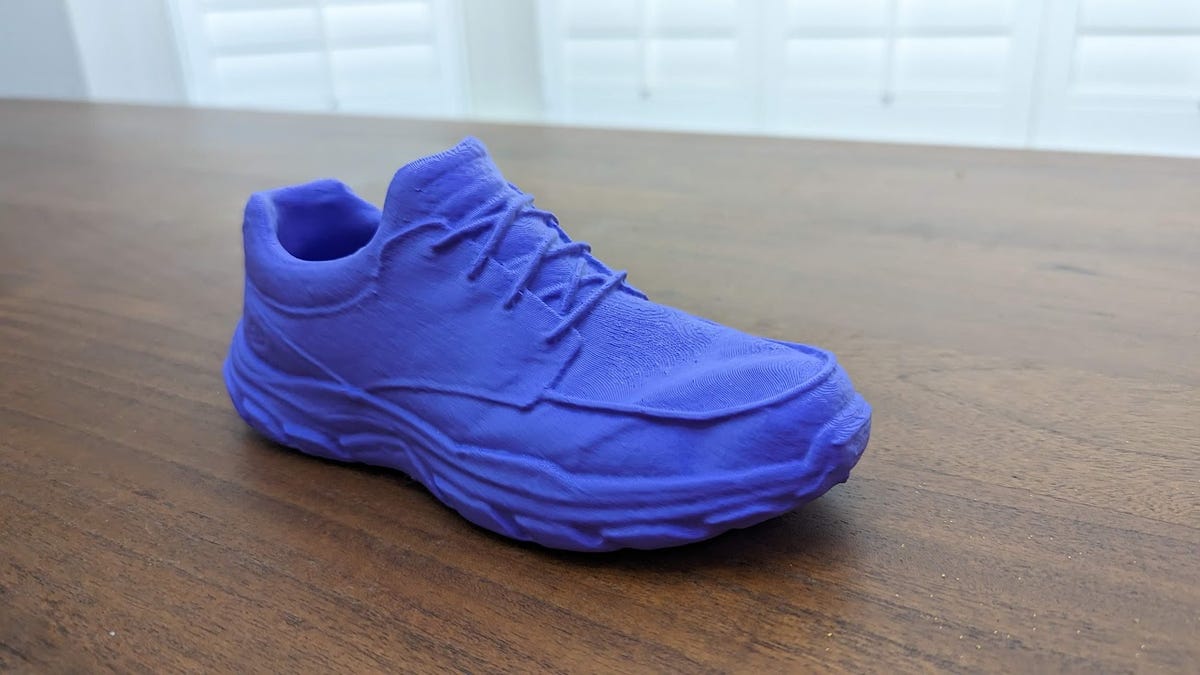
The coolest thing about photogrammetry, especially on an app like Polycam, is that it can be used with any camera you have, including DSLR cameras and even drones. You simply upload as many images as you want to the Polycam app and it will spit out a 3D rendering of the object you took, whether that’s a shoe or the Grand Canyon. It even works with Android phones, though none of those have the lidar technology like the iPhone.
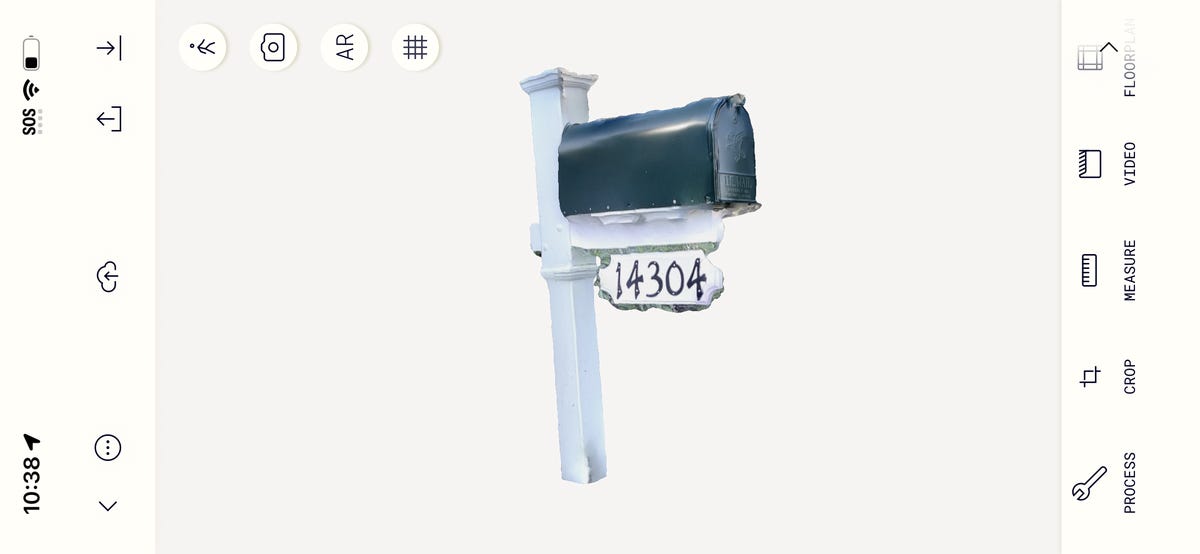
Lidar only works if you have an iPhone 12 Pro or later, but it’s excellent for scanning larger objects like mailboxes, pool tables and even cars. It works a lot like an expensive 3D scanner — by bouncing light off an object and measuring the distance the light travels — but it has a much lower resolution. This makes it excellent at scanning large, simple objects, especially if you’re keeping them as digital models.
Both photogrammetry and lidar imagery are extremely easy to use on your iPhone and require very little technical know-how to get right. They both need an app though, and after using several different ones, I found Polycam is the best choice.
Polycam costs $80 a year and offers both lidar and photogrammetry. More than that, it uses those systems in some really fun ways. Not only can you scan objects to create 3D models, but you can scan the walls inside your house and build a 3D floor plan. You can even 3D print that floor plan complete with walls, stairs and window and door openings.
When scanning an object on Polycam for 3D printing I was able to get good quality, low-resolution scans for organic shapes and much better scans of simple objects. Using Polycam to scan a broken sliding door handle was quick and simple and allowed me to accurately replicate a replacement. In fact, if you’re used to using programs like Blender — a free 3D sculpting tool on the PC and Mac — or Nomad Sculpt on the iPad or iPhone, you can import the Polycam file and spruce it up before printing.
Should you buy a 3D scanner if you own an iPhone?
I’ve spent a lot of time with several different 3D scanners and they all have the same inherent flaw: They’re just too picky to work for consumers. In a commercial setting, where everything can be controlled and your day is dedicated to getting this machine to work perfectly, then sure, a 3D scanner makes sense. If you’re a hobbyist though, with a life that requires more from you than endless hours of slow scanning, an iPhone is a better option.
Even if you don’t own an iPhone, you can pick up an iPhone 12 Pro — the first with lidar — for around $550, several hundred dollars cheaper than a 3D scanner. And once you’re done 3D scanning shoes, mailboxes, cars and houses, you still have an iPhone that can do a hundred other things too.
Technologies
Today’s NYT Mini Crossword Answers for Sunday, Nov. 23
Here are the answers for The New York Times Mini Crossword for Nov. 23.

Looking for the most recent Mini Crossword answer? Click here for today’s Mini Crossword hints, as well as our daily answers and hints for The New York Times Wordle, Strands, Connections and Connections: Sports Edition puzzles.
Need some help with today’s Mini Crossword? It includes a Jimi Hendrix reference, which I appreciated. Read on for the answers. And if you could use some hints and guidance for daily solving, check out our Mini Crossword tips.
If you’re looking for today’s Wordle, Connections, Connections: Sports Edition and Strands answers, you can visit CNET’s NYT puzzle hints page.
Read more: Tips and Tricks for Solving The New York Times Mini Crossword
Let’s get to those Mini Crossword clues and answers.
Mini across clues and answers
1A clue: LinkedIn listing
Answer: JOB
4A clue: Planet with an average surface temperature of around 860°F
Answer: VENUS
6A clue: Written with a pen
Answer: ININK
7A clue: Sheer torment
Answer: AGONY
8A clue: «___ thoughts?»
Answer: ANY
Mini down clues and answers
1D clue: Block tower
Answer: JENGA
2D clue: «Red» vegetable that’s really purple, if you ask me
Answer: ONION
3D clue: Word with Bad or Bugs
Answer: BUNNY
4D clue: By way of
Answer: VIA
5D clue: «Excuse me while I kiss the ___» (Hendrix lyric that’s famously misheard)
Answer: SKY
Technologies
Today’s NYT Connections: Sports Edition Hints and Answers for Nov. 23, #426
Here are hints and the answers for the NYT Connections: Sports Edition puzzle for Nov. 23, No. 426.

Looking for the most recent regular Connections answers? Click here for today’s Connections hints, as well as our daily answers and hints for The New York Times Mini Crossword, Wordle and Strands puzzles.
Today’s Connections: Sports Edition has one easy group. I saw «boot» and «eject» and I figured out the yellow group right away. If you’re struggling with today’s puzzle but still want to solve it, read on for hints and the answers.
Connections: Sports Edition is published by The Athletic, the subscription-based sports journalism site owned by The Times. It doesn’t appear in the NYT Games app, but it does in The Athletic’s own app. Or you can play it for free online.
Read more: NYT Connections: Sports Edition Puzzle Comes Out of Beta
Hints for today’s Connections: Sports Edition groups
Here are four hints for the groupings in today’s Connections: Sports Edition puzzle, ranked from the easiest yellow group to the tough (and sometimes bizarre) purple group.
Yellow group hint: Outta here!
Green group hint: Football stars.
Blue group hint: English events.
Purple group hint: Not black.
Answers for today’s Connections: Sports Edition groups
Yellow group: Throw out of a game.
Green group: NFL all-time leading receivers.
Blue group: Premier League derbies.
Purple group: ____ Brown.
Read more: Wordle Cheat Sheet: Here Are the Most Popular Letters Used in English Words
What are today’s Connections: Sports Edition answers?
The yellow words in today’s Connections
The theme is throw out of a game. The four answers are boot, chase, eject and toss.
The green words in today’s Connections
The theme is NFL all-time leading receivers. The four answers are Fitzgerald, Moss, Owens and Rice.
The blue words in today’s Connections
The theme is Premier League derbies. The four answers are Manchester, Merseyside, North London and Tyne-Wear.
The purple words in today’s Connections
The theme is ____ Brown. The four answers are Cleveland, Jaylen, Mack and Tim.
Technologies
Today’s NYT Strands Hints, Answers and Help for Nov. 23, #630
Today’s Strands puzzle is a delicious one, and it might make you hungry. Here are hints, answers and help for Nov. 23, #630.

Looking for the most recent Strands answer? Click here for our daily Strands hints, as well as our daily answers and hints for The New York Times Mini Crossword, Wordle, Connections and Connections: Sports Edition puzzles.
Today’s NYT Strands puzzle is a delicious one, and it might make you hungry. Some of the answers are difficult to unscramble, so if you need hints and answers, read on.
I go into depth about the rules for Strands in this story.
If you’re looking for today’s Wordle, Connections and Mini Crossword answers, you can visit CNET’s NYT puzzle hints page.
Read more: NYT Connections Turns 1: These Are the 5 Toughest Puzzles So Far
Hint for today’s Strands puzzle
Today’s Strands theme is: Sweet tooth
If that doesn’t help you, here’s a clue: Halloween treats.
Clue words to unlock in-game hints
Your goal is to find hidden words that fit the puzzle’s theme. If you’re stuck, find any words you can. Every time you find three words of four letters or more, Strands will reveal one of the theme words. These are the words I used to get those hints but any words of four or more letters that you find will work:
- STRAND, STRANDS, REDS, REND, SEND, SENDS, TEND, TENDS, RENDS, SANT, RUST
Answers for today’s Strands puzzle
These are the answers that tie into the theme. The goal of the puzzle is to find them all, including the spangram, a theme word that reaches from one side of the puzzle to the other. When you have all of them (I originally thought there were always eight but learned that the number can vary), every letter on the board will be used. Here are the nonspangram answers:
- DOTS, NERDS, RUNTS, STARBURST, WHATCHAMACALLIT
Today’s Strands spangram
Today’s Strands spangram is CANDYAISLE. To find it, start with the C that’s three letters to the right on the bottom row, and wind up.
-

 Technologies3 года ago
Technologies3 года agoTech Companies Need to Be Held Accountable for Security, Experts Say
-

 Technologies3 года ago
Technologies3 года agoBest Handheld Game Console in 2023
-

 Technologies3 года ago
Technologies3 года agoTighten Up Your VR Game With the Best Head Straps for Quest 2
-

 Technologies4 года ago
Technologies4 года agoBlack Friday 2021: The best deals on TVs, headphones, kitchenware, and more
-

 Technologies4 года ago
Technologies4 года agoVerum, Wickr and Threema: next generation secured messengers
-

 Technologies4 года ago
Technologies4 года agoGoogle to require vaccinations as Silicon Valley rethinks return-to-office policies
-

 Technologies4 года ago
Technologies4 года agoOlivia Harlan Dekker for Verum Messenger
-

 Technologies4 года ago
Technologies4 года agoiPhone 13 event: How to watch Apple’s big announcement tomorrow

